This year’s survey of trends in electric motors for motion control and automation revealed several trends and emerging developments in the use of synchronous ac motors; stepper motors, especially in closed-loop offerings; brushless motors of various types; and a smattering of specialty direct-drive offerings just making inroads.
Proliferation of synchronous ac motors
With construction and operation much like those of brushless dc (bldc) motors, synchronous ac motors — sometimes billed brushless ac, permanent-magnet (PM) ac motors, and even PMACs — are now spreading from sophisticated servomotor applications into other industrial-drive applications. More specifically, they’re seeing increased use on printing and packaging equipment; conveyors; vehicle hub drives (which we’ll explore in an article on AGVs and robotics in the special motion issue of Design World coming in May); hoists and cranes; and regenerative elevator drives.
These lightweight low-inertia motors typically deliver 5 to 150 hp at high torque and efficiency. Case in point: Sinochron PMAC motors from ABM Drives maintain efficiencies 10 to 15% better than comparable induction motors.
Synchronous ac motors’ variable-speed operation necessitates control via an inverter or VFD specially designed to start and synchronize the rotor-stator interaction. Just as bldc motors, synchronous ac motors use electronics (typically Hall-effect sensors) to dictate the correct amount of current to the windings. Arrays of four or more permanent magnets on the rotor make for synchronous operation.
But unlike bldc motors with trapezoidally wound stator coils (and back-EMF output with trapezoidal waveform needing direct-current input) synchronous ac motors are wound sinusoidally. That makes for sinusoidal back-EMF output (and the need for sinusoidal current input) as well as an audibly and electrically quieter motor. Search “difference between bldc and synchronous ac motors” for more on this.
Continuous commutation avoids torque ripple and makes for a power factor that is high … and well as super-premium efficiency even when accounting for controller losses.
Unlike induction motors that exhibit low efficiency and power factors at low speeds, PM motors also maintain performance without necessitating a gearbox or gearmotor design.
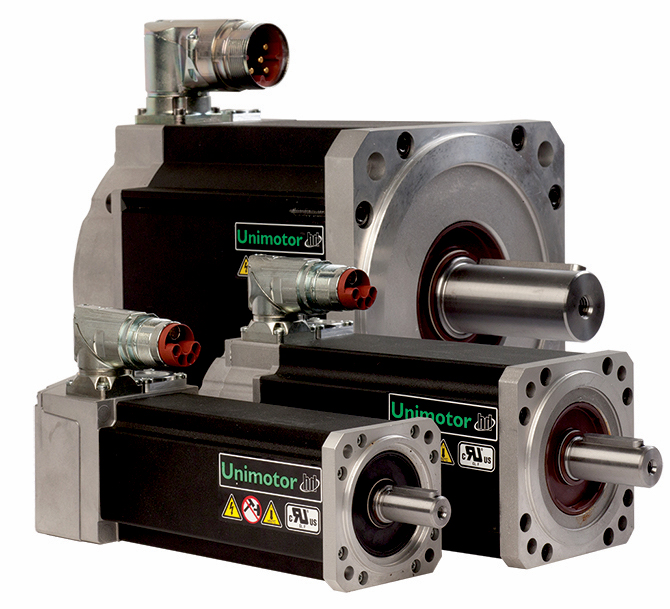
Stepper motors (PM and others) in new places
Small motors up to and including NEMA 34 and 60-mm size motors (in bldc and servo as well as hybrid stepper and closed-loop stepper variations) continue to see rising use. These small motors represent up to 70% of the market (unit) volume.
Leading applications are those in 3D printers, robotic handling, medical devices, and industrial motion designs. Our industry experts had some interesting input on stepper motors for these markets.
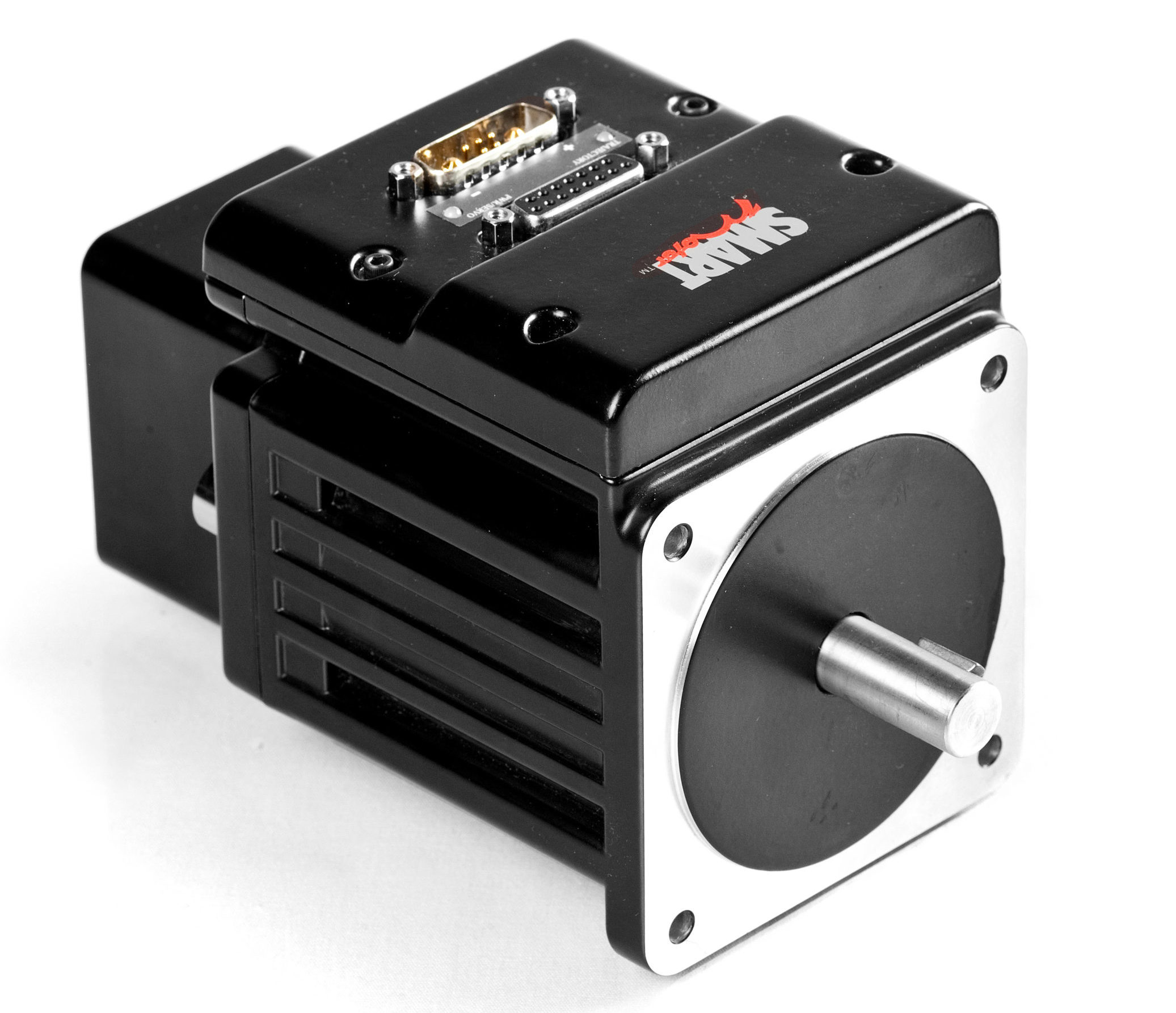
Harris Ayaz | Applications Engineer • ISL Products International: PM stepper motors are increasingly being used in industrial applications. We’ve had customers in the automated-printing, packaging, and electronic-clock industries approach us recently. These motors are much smaller than the more common hybrid steppers. PM motors can be manufactured with customized mounting configurations and specialty connectors.
The latest trends in the area of hybrid stepper motors include the addition (pre-integration by the motion-component supplier) of a linear screw and nut on this shaft to deliver a complete linear-motion solution. This makes steppers a more plug and play solution for customers.
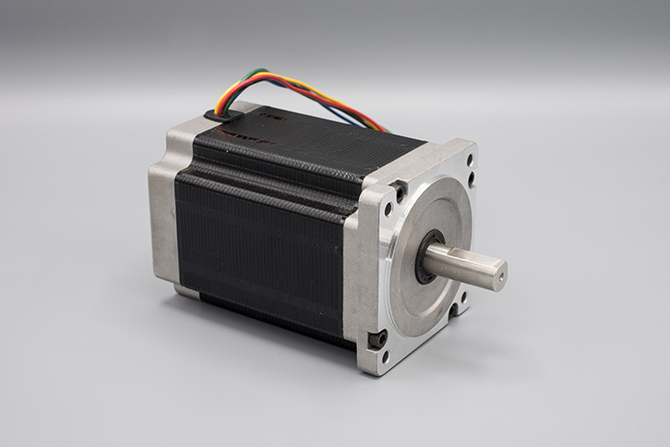
Other trends are the increase in double-shafted stepper motors as well as steppers with gearboxes.
Jonas Proeger • Trinamic Motion Control: I don’t know how they build them, but the impressively small sizes of some motors is allowing for new applications. We’ve seen unprecedented designs for robotic-surgery applications, where there are six or more tiny motors in one fist-size end effector on a surgery robot.
Most stepper motors are still operated in open loop, and that’s going to be the case for a long time — because after all, one of the biggest benefits of stepper motors is how they can offer reliable and precise positioning at low cost without the need of a feedback system. That said, we see a rise of closed-loop systems making stepper motors full-fledged servos — and they don’t have to hide behind their bldc or dc siblings.
Ayaz | ISL Products International: The rise of closed-loop control is to mimic servos and their feedback. Stepper motors can pair with all-in-one driver solutions; this allows for closed-loop control and reduces the need of purchasing two separate components. Many customers want a turnkey operation method, and steppers with closed-loop systems provide adequately for consistent loads.
Proeger • Trinamic Motion Control: With more and more of the algorithms implemented in microelectronics, it’s my view that ultimately that there will be no difference between interfacing with a bldc servo or a stepper servo … or even an open loop stepper. When that time comes, the decision on which motor type to choose will only be a mechanical decision: While stepper motors have their sweet spot at low speed and high torque, bldc motors perform better at higher speed.
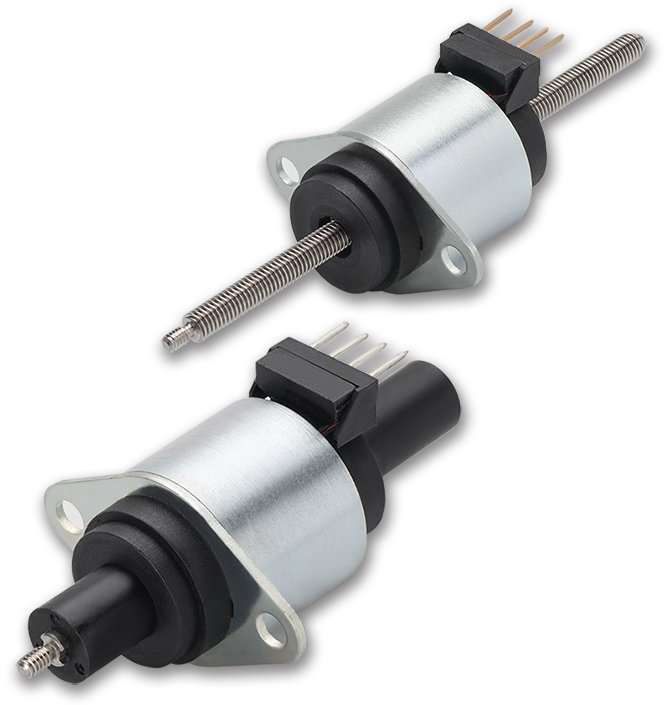
Cross-pollination between closed-loop steppers and innovative encoders
Closed-loop stepper motors leverage high-resolution feedback and DSPs — both increasingly affordable thanks to Moore’s law. Globally, the use of these closed-loop stepper systems will grow at 6.3% CAGR through 2023, according to the Prescient & Strategic Intelligence. Where once closed-loop control was overkill, now such setups boost efficiency on positioning or motion tasks that need load-responsive control.
Many uses are in robotics, packaging, and semiconductor manufacturing. These leverage the strengths of stepper-motor construction even while outperforming traditional open-loop offerings. In many cases, closed-loop stepper offerings take the form of integrated motors that include power, drive and controller boards; a feedback device; communication and I/O electronics; and cables and connectors.
Eric Rice • Applied Motion Products: Closed-loop stepper control continues to gain market share in positioning and velocity-control applications. This growth in use is primarily driven by new integrated motor designs that capitalize on the benefits of closed-loop control (such as greater torque output, higher acceleration rates, quieter operation, and greater efficiency) … but it’s also driven by the benefits of the integrated motor design itself. These benefits include fewer cables, no external drive or amplifier, simplified parts lists, and cost savings.
Furthermore, the benefits of both closed-loop control and integrated motor designs are easy to observe — which helps end users feel confident when adopting these technologies for the first time.
Need for encoders in these closed-loop steppers and other motors has meant mounting demand for higher encoder capabilities (to complement today’s high-performance networking and connectivity options).
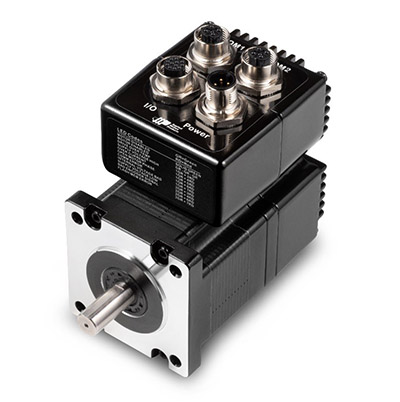
Proeger • Trinamic Motion Control: The rise of stepper servos will spur a new generation of encoders. Typically, in embedded drives, the best choice is a magnetic encoder. That’s because such drives are compact and rugged and work with a simpler mechanical setup. The disadvantage here is if a design engineer wants to use it for FOC of a stepper, many magnetic encoders have limited resolution. Recall that stepper motors have a typical pole count of 50 compared to 1 to 16 for a typical bldc motor. Another drawback is their internal-processing latency. That’s prompted demand for high-resolution magnetic encoders with low latency.
Mike Maroney | Senior product manager • Applied Motion Products: The unquestioned dominance of optical encoders is over. Magnetic encoders now offer prices an order of magnitude cheaper (per component cost) than competitive offerings. Plus they offer easier unit assembly — thanks to an airgap controlled by the PCB as well as fixturing tolerances tighter than those of their optical counterparts.
These factors combined with the rapidly technological advances in magnetic encoders are helping to shrink the performance advantage of the optical encoder … which means magnetic encoders will only continue to take more market share … and will even help encoders enter markets where they have not historically been feasible.
Patrick Wheeler | Product manager • Aerotech: Another trend in encoder design and application in motors is that towards absolute encoders and other serial protocols. The challenge is the latency created by serialization of signals when high-level of process control must be combined with actual position of linear actuators or stages.
Need for speed (and torque): Brushless-motor trends
Electronically commutated (EC) motors or ECMs — also known as bldc motors — are indispensable in an array of motion designs needing long life and top efficiency.
As an aside … note that the U.S. Department of Energy (DOE) specifies that ECMs are those low-horsepower bldc motors with integrated drives and controls (so common in HVAC designs). The agency distinguishes between bldc motors (brushless dc motors with separate drives and controls) and EC motors (having integrated drives and controls). But many OEMs and motor suppliers use the terms interchangeably.
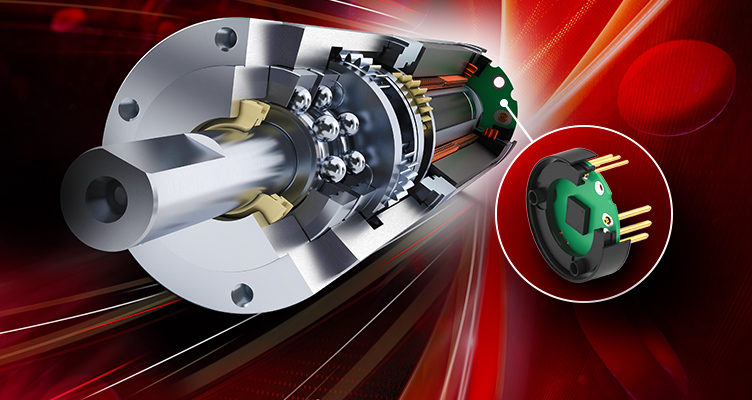
What’s more, most manufacturers of EC (bldc) motors supply to both the HVAC and motion-control markets, which is accelerating the adoption of the terms EC motor and electronically commutated motor in the motion industry.
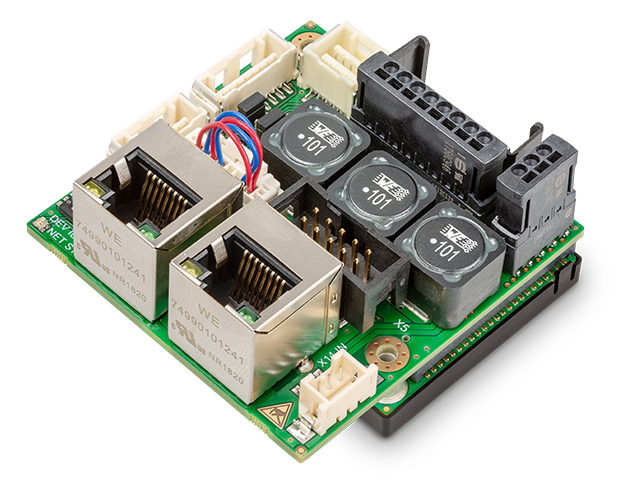
Dave Beckstoffer | Product manager • Portescap: Brushless dc motors are trending to provide multiple options to cover a broader spectrum of applications. New designs are being tailored for speed, torque, or a combination of both. Slotless motors are adapting designs to be multi-polar for additional torque or optimizing magnetic design for higher speeds. Some applications — industrial hand tools, for example — are demanding both within their operating range – free run and tightening phases. Portescap’s Ultra EC motor development has excelled in these applications, providing a faster free-run phase and higher peak torque capability.
Ayaz • ISL Products International: New trends in brushless motors are emerging in the field of medical devices and robotics. We’ve been involved with projects in various industries but in these two markets, bldc motors are most common.
Recently, we’ve seen more use of outrunner-type bldc motors in medical equipment and industrial applications. Previously outrunner-type bldc motors were most common in light recreational consumer electric vehicles. Outrunners have magnets attached to a ring or sleeve on the outside of the stator coils for output that takes the form of motor can rotation.
In smaller-scale robotics, digital servomotors commonly are used. These motors are cost effective and (with feedback) provide precise movement through PWM. We also see a lot of planetary gearheads paired with bldc motors — for speed reduction and increase in torque. With tactical robotic systems, planetary gearheads are best for high-torque and high efficiency as well as heavy load-carrying capacity.
Shigenobu Nagamori, founder and CEO of the global motor manufacturer Nidec, predicts several trends in industries employing electric motors.
“In 1973, I founded Nidec to replace all electric motors in the world with brushless dc motors … convinced of this technology’s potential. 45 years later, we’ve seen innovations related to brushless dc motors — the most impactful being expansion of the hard-disc drive (HDD) motor market in the 1990s. Now, there are four new trends of similar magnitude …”
Home appliances traditionally powered by brushed motors are increasingly using brushless dc motors — Benefits include higher power efficiency, compatibility with battery power, and longevity. Nearly all motors in room air conditioners, refrigerators, washing machines, and vacuum cleaners are (or will be) replaced by brushless dc motors, added Nagamori.
Electrification of automobiles — Migration from internal-combustion engines to electric motors is progressing rapidly … and myriad other previously engine-powered components are being replaced by versions driven by electric motors.
Proliferating robots (including collaborative robots) — Most are equipped with motors as well as speed reducers. Nidec factories that once made HDD motors are now being geared for producing robotic speed reducers instead. “Robots are expensive but increasing use (even in people’s homes) will come as prices decrease,” added Nagamori. In fact, it’s predicted the world population will reach nine billion with three service robots for every human by 2050.
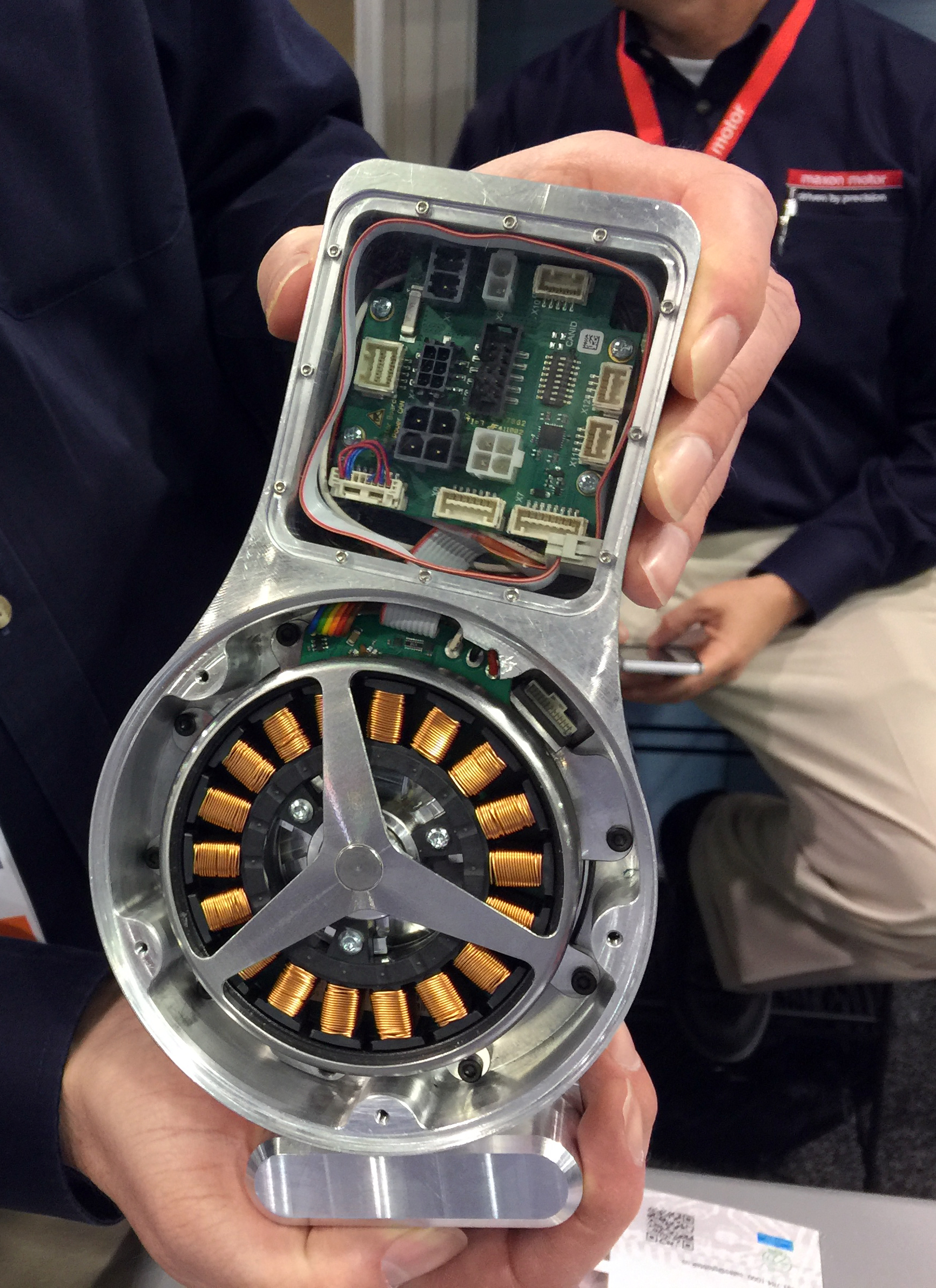
Replacement of manual tasks in logistics and agriculture — The potential for drones in logistics and agriculture is especially high, though new breakthroughs and regulations are still needed. Nagamori expects these to happen within the next couple years.
Proeger • Trinamic Motion Control: Regarding brushless motors, there is an interesting trend driven by the drone market. While typically in industrial applications we’ve seen mainly seen inrunner motors — often with NEMA double-digit-style flanges — we now see more and more outrunners that generate an impressive amount of torque at really low cost. Typically, they have a higher pole count then the traditional inrunners … resulting in smaller transmission ratios for gearboxes. They haven’t yet arrived in traditional industrial machinery, but they’re used in a lot of warehouse-automation systems as well as some collaborative robot projects.
Interoperability, supplier configuration, and design-right functionality from motors
Interoperability is a motor functionality getting big play this year.
Maroney • Applied Motion Products: We strive to keep products compatible across product lines and generations. As a baseline, we adhere to standard NEMA frame sizes on stepper motors and metric sizes on servomotors — and we certify our fieldbus implementations with relevant standards organizations … such as ODVA for EtherNet/IP, for example.
Beyond that, our proprietary Q Programming language is the same for all our motors — from our smallest open-loop stepper drive to our largest servodrive. This lets engineers who use our products learn a single language and apply it to all axes of motion in all their systems — from the smallest setup axes to the largest and most complex. This reduces programming time and simplifies troubleshooting.
In fact, our focus on backwards compatibility ensures that OEMs’ machines will be serviceable for years into the future and retrofittable with our latest offerings.
Beckstoffer • Portescap: In the design-development phase of any new product, we ensure complete motor systems can be offered — including motor, gearbox, and encoder. Mechanical compatibility guarantees the new design will integrate with other products with ease. Case in point: Some new motors might include a front face designed to accept the closest diameter gearboxes. The rear flange of the motor might have geometry to accommodate relevant encoders. This lets engineers use new products in systems … complete with motion feedback.
Motor suppliers tout an expanding menu of value-add services (or in-house engineering support) for OEMs and design engineers seeing help in their motion-design work.
Ayaz • ISL Products International: During the past 12 months we’ve helped customers (OEMs) through our value-added approach. We specialize in optimizing standard dc motors and gearmotors … and tailor each motor or gearmotor to the OEM’s specific requirements.
The most common value-add we provide is customized output performance parameters (such as speed and torque) for each customer application. We are also able to offer various motor and gearhead types, shaft customizations, material selections, magnet types, lead wires and connectors, and encoder variations. We use our in-house engineering experience to guide engineers in the right direction … after all, motion control is a precise task.
James Gallant | Director of operations • ISL Products International: We aim to be design engineers’ à la carte menu when it comes to ordering dc motors and gearmotors.
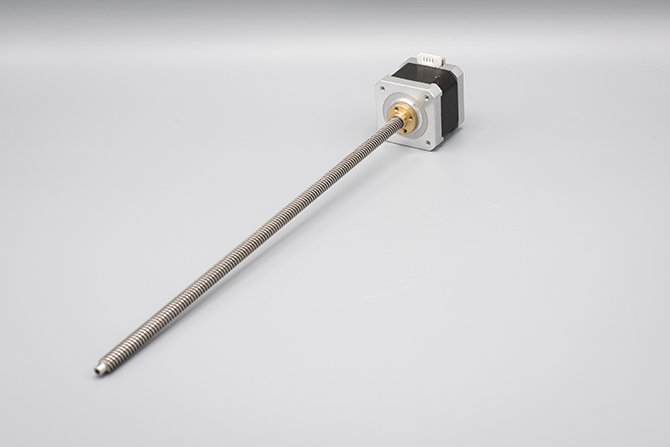
Beckstoffer • Portescap: Innovation is our passion. We extend that passion to our customers by engaging with them early in their design to offer our expertise for the motion portion of their design. It goes beyond just the motor composite, we review the mechanical and electrical parts that engage with the motor composite to ensure the optimum efficiency of the system. A joint design effort results in a more efficient and compact final product.
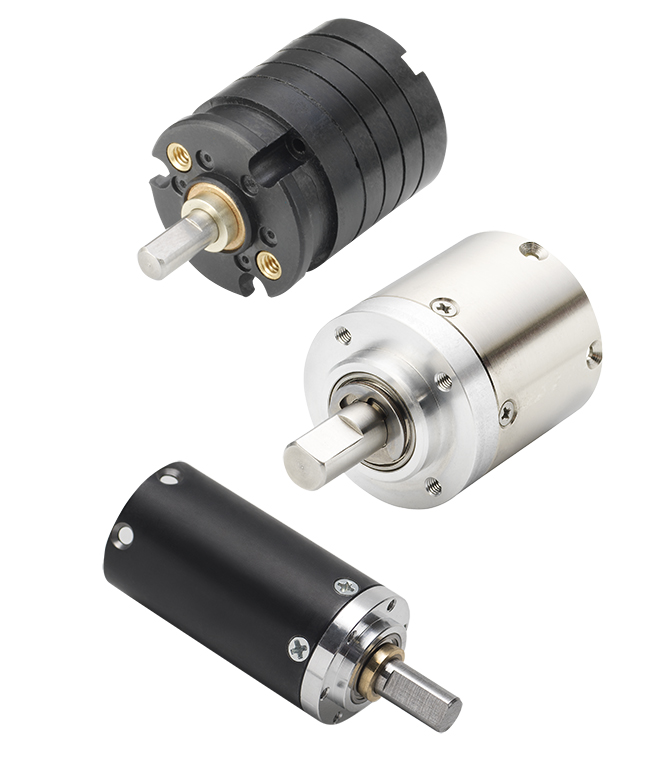
Nicole Ashton • Portescap: When we engage with customers earlier in the design process, it helps reduce motor integration risk while providing breakthrough design impact. When we work with a customer from their initial ideation stage, that’s when true collaborative innovation happens, and benefits maximized.
Of course, online configuration tools and software continue to change design-engineering approaches.
Beckstoffer • Portescap: Today’s design engineers require increasingly detailed information online — to support deeper research on available options for motion in their designs. We’ve developed MotionCompass software to provide design engineers a way to leverage our expertise anytime.
By providing dynamic recommendations based on torque and speed, we’ve shortened the iteration process. That’s also because physical testing of motors has been replaced by online calculations. This lets design engineers confidently prototype with initial motor selections and ultimately reduces the time to get new products to market.
Ayaz • ISL Products International: Brush-type motors are still common in industry. Brush dc motors have the advantage of not needing a controller for operation. A new trend we’re seeing is the rise in coreless brushed motors, also known as ironless motors.
These motors are more efficient than comparable motors and exhibit less cogging torque — plus are made with magnets such as neodymium to deliver high torque. The increased use of coreless brushed motors is primarily in cordless and handheld devices in the medical industry — because the motors have relatively low current draw.
Motors prebuilt with linear devices and other mechanical elements abound to simplify assembly. Many suppliers sell gearboxes with integrated leadscrews to reduce part counts and avoid mechanical issues associated with couplings and more. Consider a specific example: One medical-device (a single-use biopsy tool) is now built with a motor and gearbox as well as an integrated leadscrew and nut in a gearbox extension.
Beckstoffer • Portescap: Gearbox design is being advanced by three design objectives — to increase efficiency, provide higher output torque, and accept higher motor input speed. This challenges design engineers to balance these three requirements as new products are developed.
As one solution to address all three objectives, we introduced the R22HT … again, to provide significantly higher output torque and allow higher input speeds … as well as boost efficiency by stage … all in planetary technology. In fact, the design gives OEMs a broader selection of gear ratios to fine tune the torque and speed output for any application.
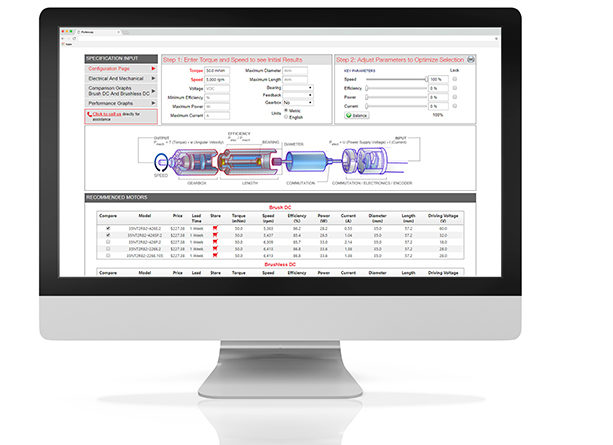
Other miniature more designs include brushless dc cannulated gearmotors that allow inline driving of Kirschner wires and pins in orthopedic surgery. Other motors go still smaller.
Richard Halstead | President • Empire Magnetics: One technology using cutting-edge micromotors and microdevices is known as LIGA — from a German acronym that’s short for lithography, electroforming, and molding and indicating processes using high-energy X-rays. The micromachining and microdevices at beamline facilities require designs constructed of gears, motors, and other components that are tiny … as many LIGA structures have active areas of 0.25 to 4 mm.

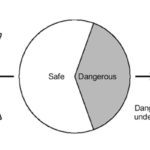
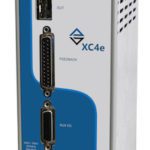
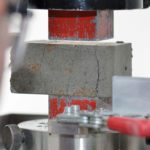
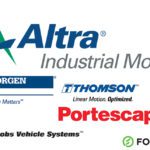
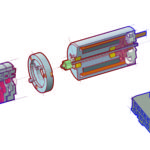

Leave a Reply
You must be logged in to post a comment.